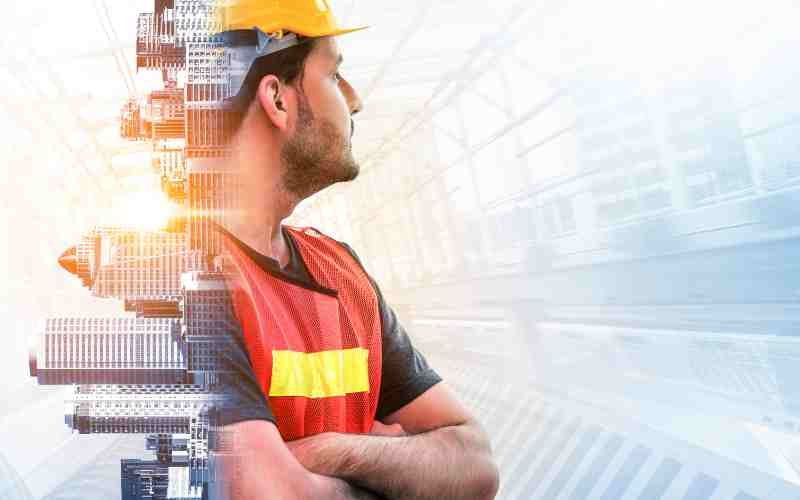When introduced in 1978 as a loose term, ”telematics” referred to an obscure technology that would take another decade to show its potential. In the decades since, telematics has grown exponentially, with the first vehicle navigation system launching in 1985.
For the most part, people associate telematics with personal-use vehicles. However, the technology is just as efficient and beneficial for construction vehicles and equipment. It can integrate with a fleet management tool like Trackunit to streamline logistics and provide a record of vehicle performance.
It wouldn’t be wrong to say that telematics is the new tracking. But how does it work, and what does it comprise? Presented below — Construction Telematics: A Complete Overview.
What is construction telematics?
Construction telematics is a type of telematics for construction vehicles specifically. Telematics technology is a hybrid of its two components: telecommunications and informatics.
It is a data-driven system that uses GPS, sensors, wireless networks, and radio-frequency identification to collect, monitor, and transmit data directly from off-road equipment and vehicles.
Think of a telematics system as a super-intelligent computer. It can report even the most inherent information about equipment, such as low tire pressure or overspeeding.
Telematics enables construction managers to monitor a piece of heavy machinery or any other vehicle from anywhere, at any time, in real time. This way you know where your vehicles are, how they are being used, and whether they need maintenance.
Modern construction telematics technologies
Back when it was initially introduced, telematics only dealt with equipment location. Today, it has expanded to include more technologies, some of which we discuss below.
LBS (Location-Based Services)
The construction industry is heavily reliant on machinery and therefore, as a construction site manager, it’s crucial for you to know where your equipment is. For example, during working hours, the equipment should be in its designated area. After hours, vehicles should be in a designated storage facility to avoid theft.
Location-based telematics services use a satellite navigation GNSS (Global Navigation Satellite System) system in combination with a local cellular network to pinpoint the equipment’s exact location.
Some standard GNSS systems available for construction telematics are Galileo, BeiDou, GPS, and GLONASS. These systems can also be used for geofencing. For example, you can see if a machine is leaving or entering a particular area.
Onboard Diagnostics
Research in the manufacturing industry has shown that a predictive and monitoring approach to equipment maintenance reduces downtime by 36% compared to a reactive approach. We can say the same about construction sites, too.
First, you need to understand that you can take one of the two approaches to reduce downtime.
- Preventative: In this strategy, you maintain the vehicles and equipment well to prevent breakdown.
- Reactive: You repair the machinery after it breaks down.
The first option is more effective at reducing downtime since it nips the problem in the bud, before the damage is caused.
Onboard Diagnostics (OBD) technology is a key component of preventive maintenance. Many construction fleet telematics systems come with built-in sensors that monitor the equipment’s health.
These sensors keep an eye on the ”maintenance indicators,” which may be related to the engine, transmission, brakes, or any other component of the machinery. They also track fault codes, like misfiring, oil pressure, and coolant temperature changes. Plus, they monitor engine hours to alert managers in case equipment is being overused or underused.
Asset use and telemetry
In construction, telemetry means monitoring equipment remotely. As we’ve already discussed earlier, the LBS determines the location only. These systems do not tell you what the equipment is doing.
Modern construction telematics systems have IoT (Internet of Things) sensors that record the vibration, temperature, fuel efficiency, and other performance metrics. The information can help you learn more about the following about construction equipment:
- Current speed
- Idling time
- Braking behavior and acceleration
- Estimated emissions
- Fuel consumption
- Seatbelt use
- Diagnostic fault codes
A construction manager can use this data to identify problems and make decisions. For example, if the equipment operators are not taking suitable safety measures, you can invest in their training. Similarly, if a machine’s idling time is too high, it’s likely you don’t need it on-site, or you may have to assign it to another job.
Benefits of construction telematics
As we have made strides in the construction industry, the need for constant supervision and monitoring has also increased. Construction sites are now bigger than ever. It is impossible to monitor every machine and vehicle on the site manually.
Construction telematics can be your eyes and ears on-site. Some of its benefits are listed below.
Geofencing and equipment tracking
Equipment theft is a significant issue that incurs unnecessary costs and results in project downtime. Geofencing is the best solution to this problem.
With technologies like GPS, you can create a ”border” around the construction site. Then, you set up alerts to notify you when a machine or vehicle crosses the border. You can also track the exact location of your equipment to make sure it’s not being used for unauthorized purposes.
Predictive maintenance
You no longer have to wait for a machine to break down before giving it any attention or performing maintenance based on vague estimations.
Construction telematics systems tell you exactly when and where maintenance is required. For example, you’ll know if a machine has low tire pressure, if it’s running too hot or not getting enough fuel.
Predictive maintenance saves you money and time by identifying potential problems before they become serious.
Better asset tracking
Telematics systems come with a host of asset trackers that you can install anywhere. The trackers go on larger equipment like cranes and loaders in most cases. But you can also install them on hand-operated tools, like jackhammers, power drills, and compressors.
The information from these trackers can help you determine if an asset is required or not. If not, you can send it back, saving rental costs.
Takeaway
Publications like McKinsey are optimistic about the solid global growth of telematics systems. There’s no reason for you or your business to lag behind. The sooner you adopt construction telematics, the higher your profits and efficiency will be.











